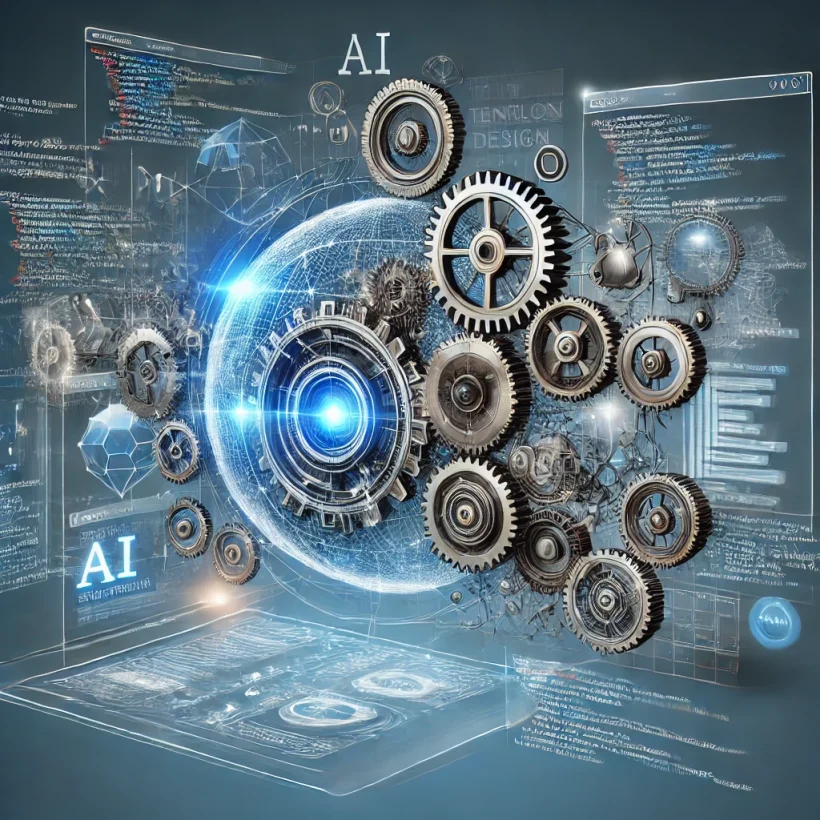on December 26, 2024

The front-end development landscape is evolving rapidly, driven by technological advancements and user expectations for faster, more engaging digital experiences. In 2024, staying informed about emerging front-end trends 2024 will be crucial for developers, designers, and businesses aiming to remain competitive in the digital world.
This guide explores the most impactful trends shaping front-end development, offering insights into how these innovations can elevate your projects and workflows.
Advancements in JavaScript Frameworks
JavaScript frameworks continue to dominate the front-end ecosystem, with new enhancements prioritizing performance and developer productivity.
React Server Components
React Server Components are becoming a game-changer for creating fast, scalable applications. By allowing components to be rendered on the server and streamed to the client, this innovation reduces JavaScript bundles and enhances load times.
Explore more at React Documentation.
Vue 3 Composition API
Vue 3’s Composition API offers improved flexibility for complex applications, making it easier for developers to manage reactivity and reusable logic.
Visit Vue.js for updates.
Svelte’s Rising Popularity
Svelte simplifies front-end development by compiling components into highly efficient JavaScript code. Its lightweight approach is gaining traction for performance-critical projects.
Learn about Svelte at Svelte.dev.
AI-Driven Front-End Development
Artificial intelligence is transforming how developers approach front-end design and functionality.
AI-Powered Code Generation
Tools like GitHub Copilot use AI to assist with coding, reducing repetitive tasks and speeding up development.
Explore Copilot at GitHub.
Personalization with AI
AI enables real-time personalization of user interfaces based on behavior and preferences, enhancing user engagement.
AI Design Tools
AI-powered tools like Adobe Sensei streamline design tasks by automating image editing, layout suggestions, and typography adjustments.
Learn about Adobe Sensei at Adobe.
Progressive Web Apps (PWAs)
PWAs continue to grow in popularity, offering app-like experiences without requiring installation from app stores.
Benefits of PWAs
- Faster load times and offline functionality.
- Cross-platform compatibility with a single codebase.
- Improved user engagement with push notifications.
Frameworks like Angular and tools like Workbox simplify PWA development.
Emphasis on Accessibility
Accessibility is becoming a cornerstone of front-end development, ensuring inclusivity for all users.
Enhanced ARIA Support
WAI-ARIA (Web Accessibility Initiative – Accessible Rich Internet Applications) is being expanded with more tools and libraries for better screen reader compatibility.
Automated Accessibility Testing
Tools like Axe and Lighthouse allow developers to identify and fix accessibility issues during development.
Visit Axe Accessibility for more information.
Modern CSS Techniques
CSS is evolving with new features that simplify styling and improve performance.
CSS Container Queries
Container queries enable components to adapt to their parent container’s size rather than the viewport, making layouts more flexible.
Learn about container queries at MDN Web Docs.
CSS Subgrid
CSS Subgrid extends the capabilities of Grid Layout, allowing for better alignment of nested elements.
New Pseudo-Classes
Pseudo-classes like :has() are improving the way developers select elements, reducing the need for JavaScript in certain scenarios.
Web Performance Optimization
Optimizing web performance is critical for user experience and SEO.
Core Web Vitals
In 2024, Core Web Vitals remain a primary focus, measuring metrics like Largest Contentful Paint (LCP), First Input Delay (FID), and Cumulative Layout Shift (CLS).
Edge Computing
Edge computing is reducing latency by processing data closer to the user. Frameworks like Next.js integrate seamlessly with edge networks for enhanced performance.
Explore Next.js for edge features.
Immersive Web Experiences
Immersive experiences are becoming increasingly popular, thanks to advancements in web technologies.
WebXR for AR and VR
WebXR enables developers to create augmented and virtual reality experiences directly in the browser.
Visit WebXR Documentation to get started.
3D Graphics with WebGL
Libraries like Three.js allow for the creation of interactive 3D visuals, enhancing user engagement.
Learn about Three.js at Three.js.
Low-Code and No-Code Solutions
Low-code and no-code platforms are democratizing front-end development, enabling non-developers to create websites and applications.
Drag-and-Drop Builders
Tools like Webflow and Wix simplify front-end design while generating clean, semantic code.
Explore Webflow.
Low-Code Frameworks
Frameworks like Bubble allow developers to build complex applications with minimal coding.
Learn about Bubble at Bubble.io.
Rise of Headless CMS
Headless CMS solutions are gaining traction for their flexibility and integration capabilities.
Popular Headless CMS Options
- Contentful: Known for its robust API and developer-friendly features.
- Strapi: An open-source option with customizable APIs.
Explore Contentful and Strapi for headless CMS solutions.
Enhanced Performance
By separating the back-end from the front-end, headless CMS architectures improve load times and enable seamless integrations with various frameworks.
Green Web Development
Sustainability is influencing front-end development practices as developers focus on reducing website carbon footprints.
Static Site Generators
Static site generators like Hugo and Jekyll create lightweight websites that consume fewer resources.
Learn more at Hugo.
Optimized Resource Loading
Techniques like lazy loading and efficient caching minimize energy consumption during page loads.
Conclusion
The front-end trends 2024 reflect a dynamic shift towards faster, smarter, and more immersive web experiences. From advancements in JavaScript frameworks and AI integration to the growing emphasis on accessibility and performance optimization, these trends are shaping the future of web development.
Staying ahead requires continuous learning and adaptation. Explore the tools and techniques discussed here to enhance your workflows and deliver cutting-edge solutions. As technology continues to evolve, embracing these innovations will ensure you remain competitive and deliver exceptional user experiences.


